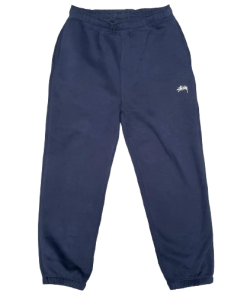
The cleats market is a dynamic and diverse segment within the broader athletic footwear industry. Cleats, designed to provide athletes with optimal traction and performance across various sports and surfaces, have seen significant growth and innovation. This blog delves into the cleats market segmented by sports type, ground type, distribution channel, and region, providing a detailed overview of trends and insights.
Market Segmentation by Sports Type
1. American Football
American football cleats are engineered for stability and protection, catering to the sport’s physical demands. They often feature mid-to-high tops for ankle support and specialized studs for better grip on grass fields.
2. Cricket
Cricket cleats are designed for quick lateral movements and sprinting. They typically have spikes on the sole to aid traction on the pitch, crucial for both batting and bowling.
3. Soccer
Soccer cleats, or football boots, are the most diverse, with variations for different playing styles and positions. They are lightweight and focus on enhancing speed, ball control, and precision.
4. Rugby
Rugby cleats are built for durability and traction on soft, muddy grounds. They generally have a more robust construction to withstand the physicality of the sport and often feature interchangeable studs.
5. Others
This category includes cleats for sports like baseball, lacrosse, and field hockey. Each sport requires specific design features to enhance performance and safety.
Market Segmentation by Ground Type
1. Multi-ground
Multi-ground cleats are versatile, designed to perform well on various surfaces including natural grass and artificial turf. They are ideal for players who switch between different types of fields.
2. Soft/Muddy Grass
Cleats for soft or muddy grass fields have longer studs to provide deep penetration and traction. These are crucial for preventing slips in wet conditions.
3. Artificial Turf
Cleats for artificial turf feature shorter, more numerous studs. They are designed to mimic natural grass feel and provide excellent grip without damaging the turf.
4. Firm/Natural Grass
Firm ground cleats have conical or bladed studs optimized for hard, dry natural grass fields. They offer a balance of grip and comfort.
5. Artificial Grass
Cleats for artificial grass are similar to turf cleats but often have slightly longer studs to accommodate the denser surface and provide better traction.
Cleats Industry Developments
July 2021: Adidas’ short list of contenders for the brand, Wolverine World Wide and Authentic Brands Group, working together, private equity firms Advent International, CVC, Cerberus Capital, and Sycamore Partners, as well as other businesses, made the cut.
July 2019: A pair of Nike Inc. running sneakers fetched $437,500 at a Sotheby’s auction. Bill Bowerman, a track coach and co-founder of Nike, created the so-called “Moon Shoes” for runners competing in the 1972 Olympics trials. Miles Nadal, a Canadian investor and auto enthusiast, had just paid $850,000 for 99 pairs of sport shoes that were part of a limited edition collection. The previous record was $190,373 in 2017 for a pair of autographed Converse shoes purchased in California and rumoured to have been worn by Michael Jordan during the 1984 Olympic basketball final. The purchase price set a new record for one pair of trainers.
March 2023: Puma said that it would discontinue utilising kangaroo leather in its goods, including the revamped KING football boot, which has uppers made of at least 20%, recycled material.
Market Segmentation by Distribution Channel
1. Store-Based
- Supermarkets and Hypermarkets: These large retail formats offer a wide range of cleats but generally cater to the mass market with limited specialized options.
- Specialty Stores: Focused on sports equipment, these stores offer a broad selection of cleats, including high-end and sport-specific models, often with expert advice.
- Others: This includes smaller, independent retailers and sporting goods chains that offer a varied selection of cleats.
2. Non-Store-Based
- E-commerce Platforms: Online sales are booming, with platforms like Amazon, eBay, and specialized sports retailers providing extensive choices and competitive pricing. The convenience of home delivery and easy returns has driven this segment’s growth.
Market Segmentation by Region
1. North America
The North American market is significant for American football, soccer, and baseball cleats. High consumer spending power and a strong sports culture drive the demand here.
2. Europe
Europe is dominated by soccer cleats due to the sport’s immense popularity. Rugby and cricket also contribute to the market, especially in countries like the UK and France.
3. Asia-Pacific
The Asia-Pacific region shows diverse demand across cricket, soccer, and emerging sports like rugby. Increasing disposable incomes and growing sports participation fuel market growth.
4. Latin America
Soccer is the predominant sport driving the cleats market in Latin America. The region’s deep-rooted football culture ensures steady demand for soccer cleats.
5. Middle East and Africa
Cricket and soccer dominate the cleats market in this region. Economic development and increasing sports infrastructure investments are boosting market expansion.








